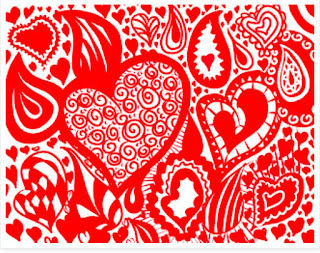Easy Free Valentine’s Day Art Lesson
Do your “big kids” sometimes beg you to let them do a lesson that the “little kids” do? A sub day is a good opportunity to let students do an easy, no-fail lesson.
They also beg to let them do valentine cards around the holiday, so why not let them? This can be done on printer paper and using just crayons. The paper can be folded in half if they want to make a greeting card or just done on a full sheet of paper.
Prepare the Paper
Students can either fold their paper to create a greeting card or use the entire paper as a flat surface.
Draw the Heart
In the center of the paper, students should draw a heart shape. It doesn't have to be perfect.
Add Random Lines
Next, students should draw random lines that cut through the heart and travel around the paper.
Trace the Heart
Students then trace the heart shape heavily with a crayon.
Color Inside the Heart
Color the spaces inside the heart shape heavily. Students can use a particular color scheme or random colors. Each shape should be filled with a different color than the one next to it.
Color or Pattern Outside the Heart
For the shapes outside of the heart, students can choose to color them in or fill them with patterns. Patterns may be colored in or left as just patterns.
:
If you would like to have this lesson in a format that is ready to go, you can purchase it here: TeachersPayTeachers Valentine's Day w Crayons and PaperI also just uploaded another paper and crayon Valentine's Day lesson here: TeachersPayTeachers Valentine's Day w Crayons and Paper 2
If you would like to see some other Valentines Day options, check out these blog posts:
Fractional Hearts - FreeSymmetrical Hearts -TPTValentine Art Activity - TPT





















